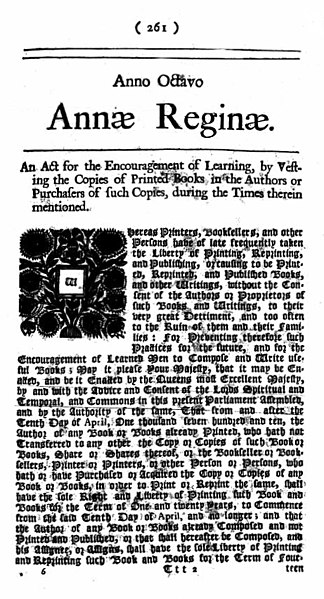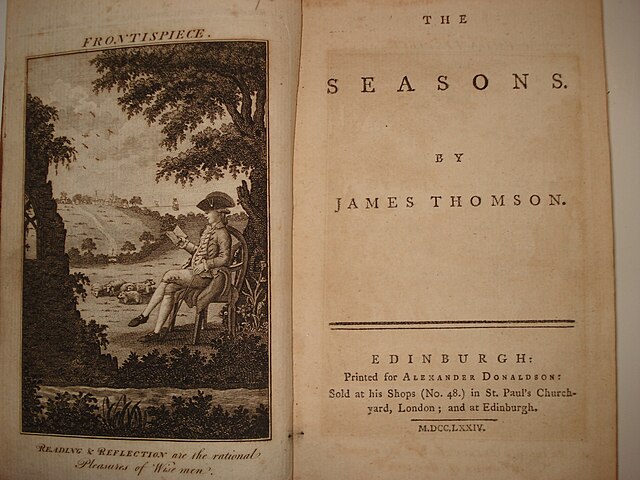The history of copyright starts with early privileges and monopolies granted to printers of books. The British Statute of Anne 1710, full title "An Act for the Encouragement of Learning, by vesting the Copies of Printed Books in the Authors or purchasers of such Copies, during the Times therein mentioned", was the first copyright statute. Initially copyright law only applied to the copying of books. Over time other uses such as translations and derivative works were made subject to copyright and copyright now covers a wide range of works, including maps, performances, paintings, photographs, sound recordings, motion pictures and computer programs.
Title page of Index Librorum Prohibitorum, or List of Prohibited Books, (Venice 1564).
The Statute of Anne came into force in 1710
The Copyright Act of 1790 in the Columbian Centinel
Donaldson v Becket (1774) 2 Brown's Parl. Cases 129, 1 Eng. Rep. 837; 4 Burr. 2408, 98 Eng. Rep. 257; 17 Cobbett's Parl. Hist. 953 is the ruling by the British House of Lords that held that copyright in published works was not perpetual but was subject to statutory limits. Some scholars disagree on the reasoning behind the decision.
Photograph of Frontispiece – The Seasons by James Thomson Published by Alexander Donaldson
Statute of Anne




